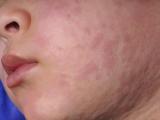Aug 9, 2004 (CIDRAP News) – The recent Ebola hemorrhagic fever outbreak in Sudan has ended after 17 cases with seven deaths, signaling a remarkably successful containment effort, the World Health Organization (WHO) says.
"The rapid containment of this outbreak was a tremendous success for the health authorities, WHO, and the international community involved in the control operations," Dr. Abdullah Ahmed, director of the WHO in southern Sudan, said in an Aug 7 news release.
Aug 7 was the 42nd day since the last death in the outbreak occurred on Jun 26, the WHO said. Because 42 days is twice the maximum incubation period for Ebola and no further cases have been reported, the agency declared the outbreak ended.
The outbreak began in May, and in June the WHO was reporting 30 cases with 12 deaths. But on Jun 22 the agency said 12 cases, including one death, had been reclassified as measles. The current count of 17 cases with 7 deaths signals a case-fatality rate of 41%, as compared with 50% to 90% in past Ebola outbreaks.
"In Yambio, WHO and our partners were able to apply lessons learned during responses to the five Ebola outbreaks that have occurred since 2000," Dr. Pierre Formenty, a member of the WHO response team, said in the release.
The Sudan subtype of Ebola virus was confirmed in tests by the Kenya Medical Research Institute and the US Centers for Disease Control and Prevention, the WHO said. The agency worked with local health authorities, UNICEF, Medicins Sans Frontieres–France, other nongovernmental organizations, and churches to control the outbreak.
"Intensive social mobilization for Ebola was essential to the outbreak's containment," the WHO said. "Key messages about the disease and behaviour-specific advice were passed on to the people in and around Yambio by local community advocates." Officials said these efforts succeeded in convincing people of the danger and the need for precautions.
The control efforts included an isolation ward at Yambio Hospital with a low fence so that patients were effectively isolated but still could see and talk to family and friends at a safe distance, the WHO reported.
The agency said the outbreak proved "the value of rapid outbreak detection, local response capacities, active community involvement, and the coordination of specialized international assistance."
Ebola was first identified in 1976, when it broke out separately in southern Sudan and northwestern Congo (then called Zaire). It remains relatively rare, but outbreaks have become more common since the mid-1990s. The largest outbreak, involving 425 presumptive cases with 224 deaths, occurred in southern Sudan in 2000 and 2001.
Ebola is believed to spread via blood and body fluids, but its natural reservoir between outbreaks is unknown.
See also:
Aug 7 WHO news release
http://www.who.int/mediacentre/releases/2004/pr54/en/



















